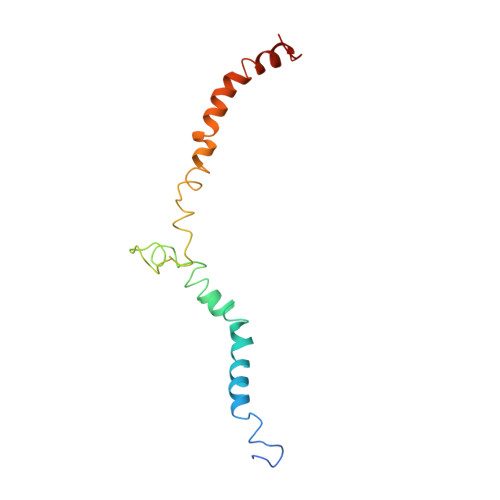Mechanism for transforming cytosolic SOD1 into integral membrane proteins of organelles by ALS-causing mutations
Lim, L., Lee, X., Song, J.(2015) Biochim Biophys Acta 1848: 1-7
- PubMed: 25306968
- DOI: https://doi.org/10.1016/j.bbamem.2014.10.002
- Primary Citation of Related Structures:
2MP3 - PubMed Abstract:
Mutations in superoxide dismutase 1 (SOD1) cause familial amyotrophic lateral sclerosis (FALS), while wild-type SOD1 has been implicated in sporadic ALS (SALS). SOD1 mutants are now recognized to acquire one or more toxicities that include their association with mitochondrial and endoplasmic reticulum membranes but the underlying structural mechanism remains unknown. Here we determine NMR conformations of both wild-type and a truncation mutant (L126Z) of SOD1 in aqueous solution and a membrane environment. The truncation mutant (which causes FALS at very low levels, indicating its elevated toxicity) is highly unstructured in solution, failing to adopt the β-barrel SOD1 native structure. Wild-type SOD1 is also highly unstructured upon reduction of disulfides and depletion of zinc. Most remarkably, both mutant and wild type adopt similar, highly-helical conformations in a membrane environment. Thus, either truncation or depletion of zinc is sufficient to eliminate the native β-barrel structure, and transform cytosolic SOD1 into membrane proteins energetically driven by forming amphiphilic helices in membranes. That zinc-deficiency is sufficient to produce a similar transformation in wild-type SOD1 implies that the wild-type and FALS-linked SOD1 mutants may trigger ALS by a common mechanism.
Organizational Affiliation:
Department of Biological Sciences, Faculty of Science, National University of Singapore, Republic of Singapore.














